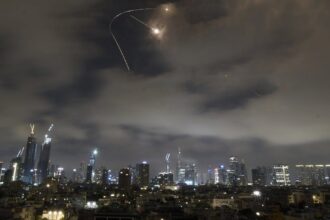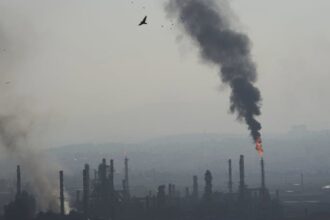As dawn broke over Kyiv Tuesday, the thunderous roar of air raid sirens pierced the morning calm—a grim reminder that despite diplomatic overtures, Russia’s military campaign shows no signs of abating. A barrage of missiles struck critical infrastructure in multiple Ukrainian regions, plunging thousands into darkness as the countdown to a proposed U.S.-backed peace initiative enters its crucial phase.
“We were awakened by explosions that rattled our windows,” said Olena Kovtun, 43, a Kyiv resident who spoke by phone from her basement shelter. “This is becoming our terrible routine, even as the world talks about peace.”
Ukrainian air defense forces reported intercepting 30 of the 35 missiles launched across the country, primarily targeting energy facilities in Dnipro, Zaporizhzhia, and Donetsk regions. The timing of these attacks appears deliberately calculated to coincide with renewed diplomatic pressure on Moscow, according to defense analysts at the Kyiv-based Center for Defense Strategies.
President Volodymyr Zelenskyy addressed the nation following the strikes, emphasizing that “genuine peace cannot be built while missiles rain down on civilian targets.” His statement comes as Ukrainian diplomats prepare to present their position at the upcoming peace summit in Switzerland, where representatives from over 80 countries are expected to gather.
The intensified bombardment follows U.S. Secretary of State Antony Blinken’s announcement of a 45-day deadline for Russia to engage meaningfully in peace negotiations. The American proposal, developed in coordination with European allies, outlines a phased withdrawal of Russian forces and restoration of Ukrainian sovereignty, though questions remain about territorial concessions.
“Moscow’s response has been twofold—verbal openness to discussions paired with escalating military pressure,” explains Dr. Mikhail Kovalenko, professor of international relations at the University of Toronto. “This dual approach aims to strengthen Russia’s bargaining position while testing Western resolve.”
Energy Minister Galyna Kalinichenko confirmed that emergency power outages have been implemented in six regions, with repair crews working under dangerous conditions to restore electricity and heating. The attacks have targeted Ukraine’s already fragile energy grid, which has lost over 50% of its pre-war capacity according to World News data.
Meanwhile, the human cost continues to mount. The Ukrainian Health Ministry reported 17 civilians injured in today’s strikes, adding to the over 10,000 civilian casualties documented by the UN since Russia’s full-scale invasion began in February 2022.
On the diplomatic front, China has proposed hosting follow-up talks in Beijing, positioning itself as a mediator in the conflict. However, Ukrainian officials expressed skepticism about China’s role, pointing to Beijing’s continued economic support for Moscow as undermining its neutrality claims.
Canadian Foreign Affairs Minister Mélanie Joly announced an additional $150 million in humanitarian assistance for Ukraine during her visit to Canada News yesterday, emphasizing that “Canada stands firmly with Ukraine in its darkest hour.”
Economic analysts from CO24 Business note that prolonged conflict continues to destabilize global food security and energy markets. Wheat futures rose 3.2% following today’s strikes on Ukraine’s agricultural heartland, while natural gas prices in Europe jumped 4.8% on renewed supply concerns.
Russian President Vladimir Putin, addressing a security council meeting in Moscow, defended the strikes as targeting “military infrastructure” despite overwhelming evidence of damage to civilian facilities. Kremlin spokesman Dmitry Peskov stated Russia remains “open to negotiations” but insisted any peace deal must acknowledge what he called “new territorial realities.”
As winter approaches, humanitarian organizations warn of a potential catastrophe if power outages persist. The International Committee of the Red Cross estimates that over 5 million Ukrainians currently face inadequate heating and water supplies, with that number potentially tripling if energy infrastructure attacks continue.
What remains uncertain is whether this escalation represents Moscow’s final push before serious negotiations or a fundamental rejection of the peace process altogether. As Ukraine and its allies prepare for crucial talks, one question looms large: can diplomatic pressure overcome military aggression, or are we witnessing the prelude to a new, more devastating phase of this war?

























